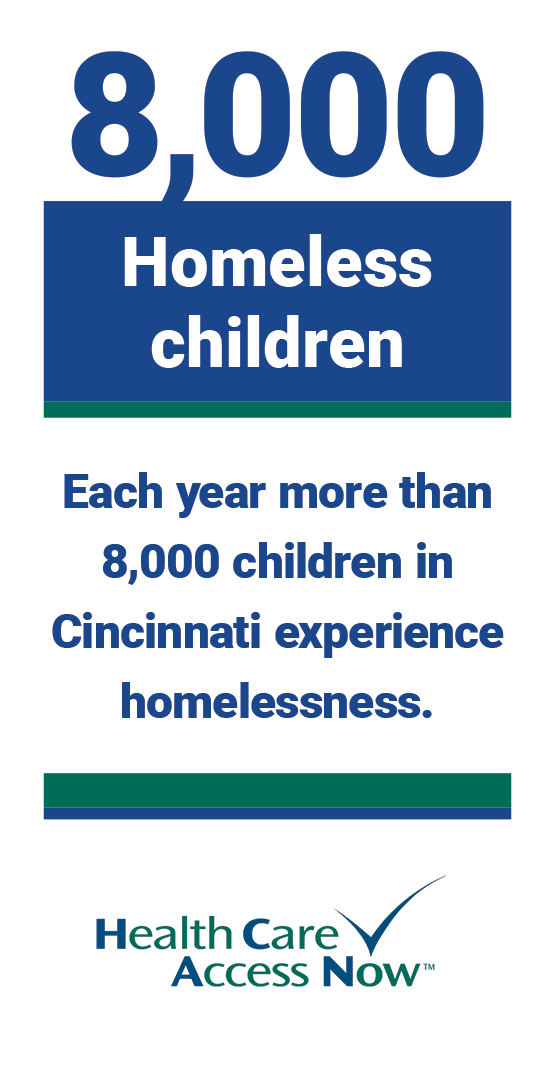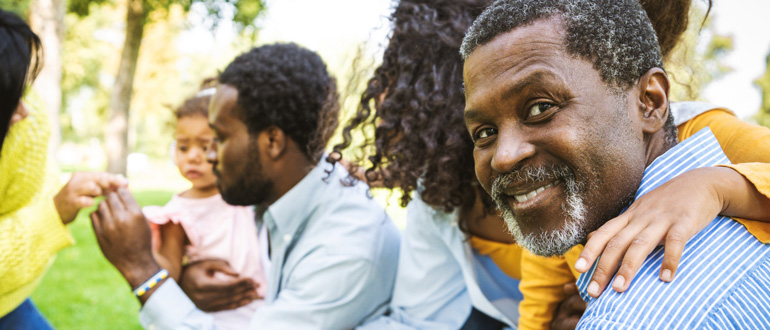How experiencing homelessness affects Cincinnati children

More than 8,000 children in Cincinnati experience homelessness each year. The average person—person, not just child—experiencing homelessness is nine years old. UpSpring, a local nonprofit aiming to break the cycle of poverty, fights these challenges.
Lack of stability and consistency affects education
Children experiencing homelessness suffer from lack of stability. “They may switch schools two to three times a year. Their living arrangement might change four to five times a year. By the time they get to fifth grade, they’re likely to be a couple of years behind,” says Alex Kuhns, former Executive Director of UpSpring. Only about a quarter of students experiencing homelessness manage to graduate from high school. “Their families are constantly fighting barriers.”

He gives the hypothetical example of a child who attended John P. Parker Elementary School in Madisonville but whose mother lost her job, forcing them to move in with her sister in Price Hill. “Now they’re across town, and special arrangements have to be made for bus service from Price Hill to the child’s school, which could take weeks.”
Katie Jensen, Development and Marketing Director and Interim Executive Director of UpSpring, puts it this way: “It can be hard for children to focus in school if they’re hungry or didn’t get a good night’s sleep; parents and caregivers often do not have the bandwidth to oversee studying or homework.”
Children suffering from homelessness not only face educational challenges, “in the practical sense of missing class,” says Kuhns, but also face deeper emotional issues: “Why is my family this way? Am I ever going to be successful? Can I dream like other kids?”
ACEs and health
Jensen says that “[c]hildren experiencing homelessness have a higher number of Adverse Childhood Experiences (ACEs), which are correlated with negative mental and physical health outcomes in [both] childhood and adulthood. Our programs aim to negate these effects and provide positive childhood experiences that can be translated to future success.”
Kuhns says that mental health can be substantially affected by experiencing homelessness and that not all teachers have the time or the training in trauma-informed care to help children appropriately.
He says, “It just makes it harder [for these children] to trust folks. [When children experience trauma, t]he brain starts to reroute neurons and shut down certain pathways, and learning becomes complex. Consistent mental health care and medication is [less likely to happen] because of all the transition in the kids’ life. It’s difficult to provide consistent care.”
Filling gaps
Health Care Access Now (HCAN) works with low-income individuals and families by training and dispatching Community Health Workers (CHWs) to identify and overcome barriers to good health outcomes. One of those barriers is often lack of suitable housing. CHWs provide education and resources to those they serve, in hopes of improving both health and quality of life.
UpSpring’s programs come in to fill in some of the gaps, too. For example, the UpSpring Summer 360 program recently completed its 25th year of providing summer day camp to kids experiencing homelessness.
“We work with 100 different partners, ranging from social services agencies to schools to shelters,” says Kuhns. “They make referrals to us and do resource collaboration.” Those partners make it possible for UpSpring’s “small but mighty staff of six” to serve more than “3,000 children each year.”
School-based Health Centers also help provide stability and consistency in medical care.
Building hope
UpSpring’s programming is “based in trauma-informed care and provide learning experiences, team building, and self-esteem boosting,” according to Kuhns. They work at 11 different sites.
The age of children experiencing homelessness affects the type of programming UpSpring provides. A lot of teenagers in this situation harbor worries about what the future will hold for them. “We strive to help [high school kids] see what basic steps they can take to have fruitful adult lives.”
UpSpring staff work with younger children to prevent them from becoming jaded and build confidence. “Our hope is that [children who participate in UpSpring programs] believe they can be what they want to be. It sounds fluffy, but it’s so important. When you don’t have running water or a mattress [for example], it’s hard to see yourself as a successful adult someday. You learn to accept that you will have to get by with less instead of striving to be or have more,” Kuhns says.
Jensen says, “Our programs provide not only educational interventions, but also enrichment and social-emotional skill building to help children build resiliency, overcome trauma, and build hope to support the fundamental belief that they can succeed. Our hope is that the children in our programs will succeed in school and grow up into adults that can break the cycle of poverty and homelessness.”
Kuhns, now Chief Operating Officer at Shelterhouse, still holds a special place in his heart for UpSpring and for the children it serves. “Once you’re an UpSpring kid, you’re always an UpSpring kid.” The programs stay open to them even once their families no longer are experiencing homelessness. “Consistency and stability are the most important priorities.”






